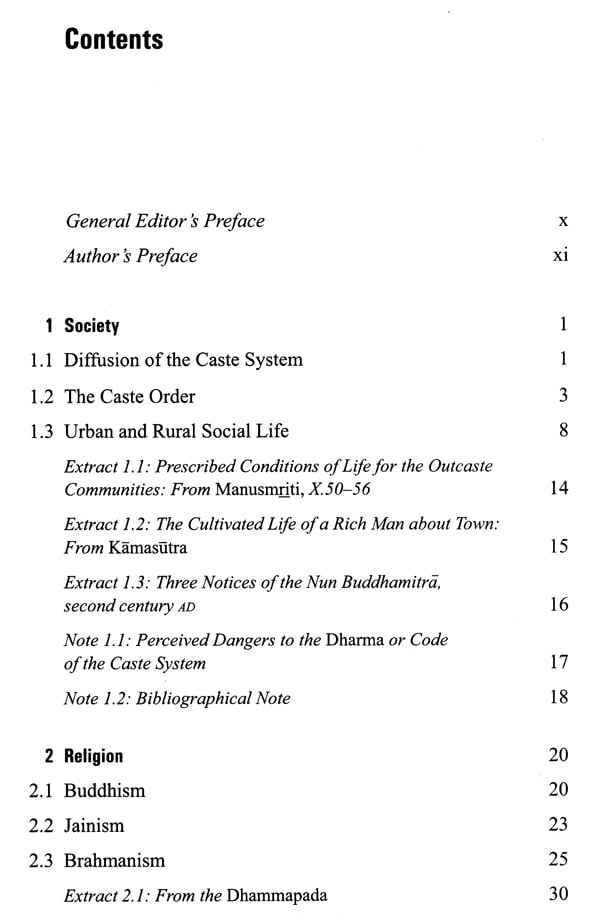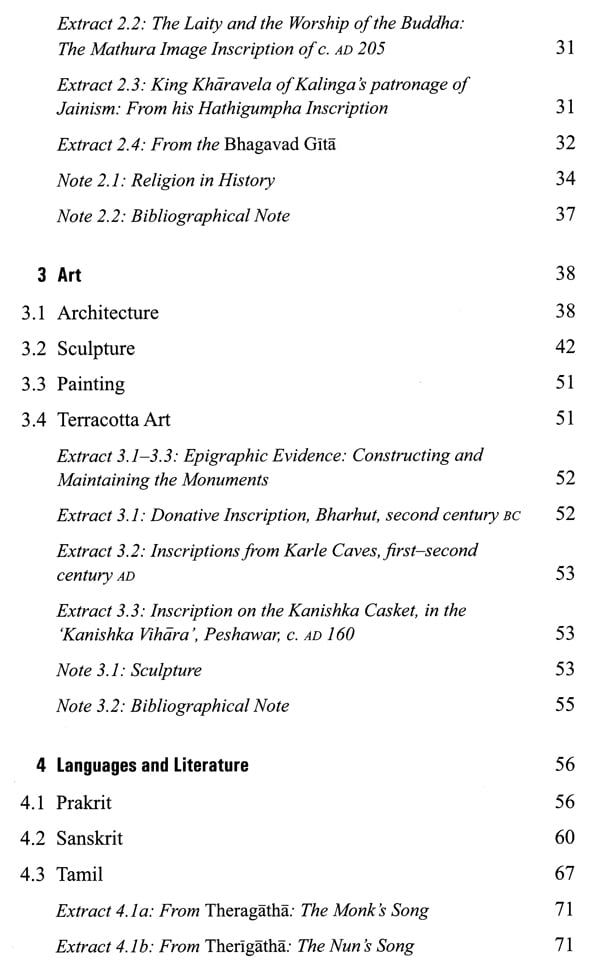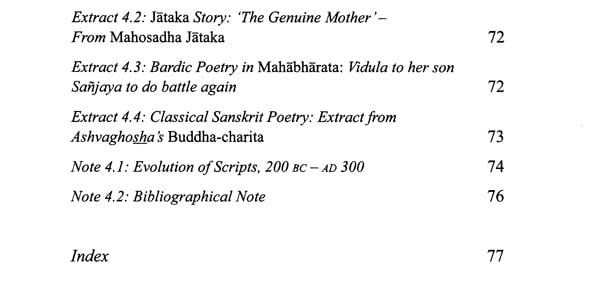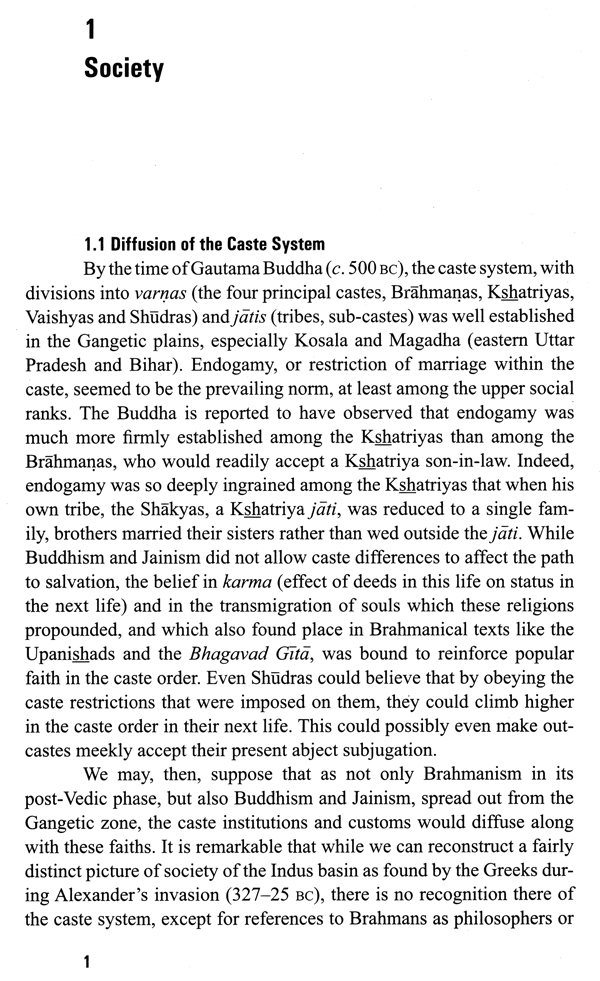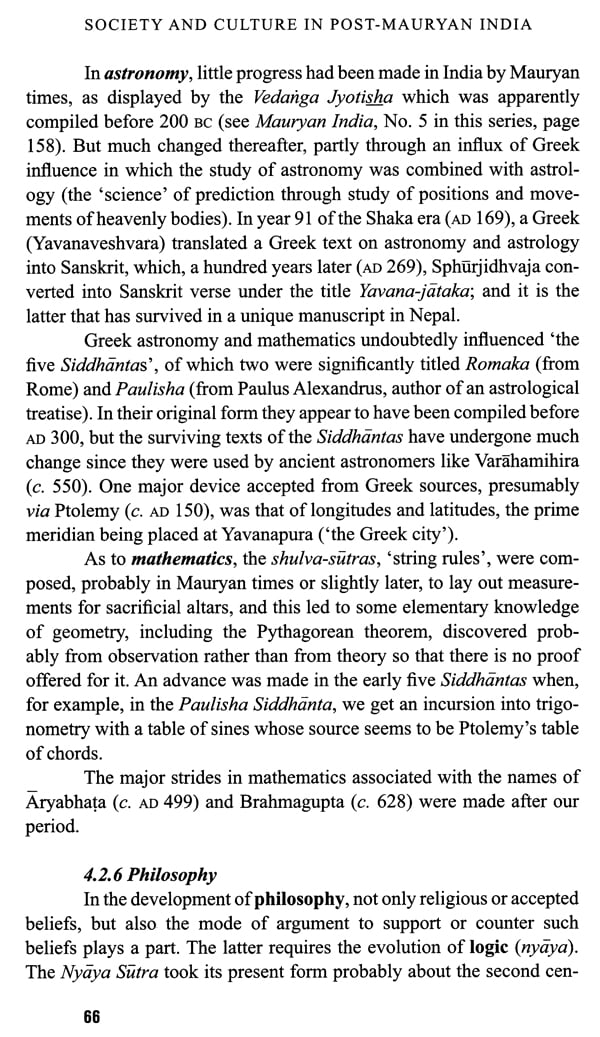
Society and Culture in Post Mauryan India (C. 200 BC - AD 300)
Book Specification
| Item Code: | NAS529 |
| Author: | Kesavan Veluthat |
| Publisher: | Tulika Books |
| Language: | English |
| Edition: | 2022 |
| ISBN: | 9789382381846 |
| Pages: | 96 (22 B/W Illustrations) |
| Cover: | PAPERBACK |
| Other Details | 9.50 X 6.50 inch |
| Weight | 160 gm |
Book Description
This book is the companion volume to People's History of India, No. 6, which gave an account of the political and economic history of the post-Mauryan period from c. 200 BC to AD 300. The present volume deals with the important aspects of the society and culture of the same period. It traces the diffusion of the caste system and describes its detailed codification. The major changes in religion, notably the emergence of Mahayana Buddhism and Bhakti in Brahmanism, are surveyed in depth. The reader will also find much that is fresh and enlightening in the accounts of sculpture, languages and literature, in all of which fields the period saw much innovation and change.
Bhairabi Prasad Sahu is Professor of History at the University of Delhi. His recent publications include The Changing Gaze: Regions and the Construction of Early India (2013) and Interrogating Political Systems: Integrative Processes and States in Pre-Modern India (2015; edited, with Hermann Kulke).
The contributor of Chapter 4 in this volume, Kesavan Veluthat, is Professor of History at the University of Delhi. His more important publications include The Political Structure of Early Medieval South India (1993), The Early Medieval in South India (2009) and Brahman Settlements in Kerala (2013; second edition).
I am thankful to the Aligarh Historians Society, the sponsor of the project A People's History of India, particularly Professor Irfan Habib, for having asked me to prepare this volume. The post-Mauryan centuries form one of the most exciting periods in early Indian history, marked by the consolidation of earlier trends in northern India and the emergence of new centres and nodes beyond the Gangetic valley. The Deccan and the far south came under historical limelight during the period. Furthermore, India was connected through the Silk Route with China, Central Asia and West Asia, and her maritime contacts ranged between Roman Egypt, the Red Sea and Southeast Asia, leading notice-ably to commercial and cultural interaction. The period witnessed the heyday of Buddhism and Jainism, as well as the construction of the Brahmanical conceptions of society and the formative beginnings of Puranic religion. It was equally marked by the emergence of classical Sanskrit and the use of Tamil-Brahmi script. My earlier engagement with the period was limited to a few articles and this generous offer allowed me to put my thoughts together on this formative period of Indian history, for which my graduate students were the audience so far. Admittedly, I have drawn on the contributions of many friends, and in that sense this work is a result of cooperation from many quarters.
I am grateful to my friend and colleague, Professor Kesavan Veluthat, for having unhesitatingly agreed to contribute the chapter on `Languages and Literature', and that unmistakably bears an imprint of his familiarity with the theme.
Mr Faiz Habib, whom I have known over the years, has prepared the map for this volume and I owe him sincere thanks. I am thankful to the Library staff at the Indian Council of Historical Research, especially Ms Jyotsna Arora and Ms Noor, for their courtesy. I would like to also acknowledge the help I received from the India International Centre Library.
The Archaeological Survey of India and the National Museum were generous in providing the required photographs for this volume, and my friend Dr Jamal Hasan and Ms Joyoti Roy deserve special mention for their unstinted cooperation.
My wife and son, Gayatri and Devavrata, have as usual been very supportive and I cannot fail to record my thanks to them.
Gratitude is owed to Professors Irfan Habib and Shireen Moosvi of the Aligarh Historians Society, and Ms Indira Chandrasekhar of Tulika Books, for their generous support and ensuring that the book gets published on time.
It may be noted that the same scheme of transliteration has been followed as in previous volumes of the series.
**Contents and Sample Pages**
